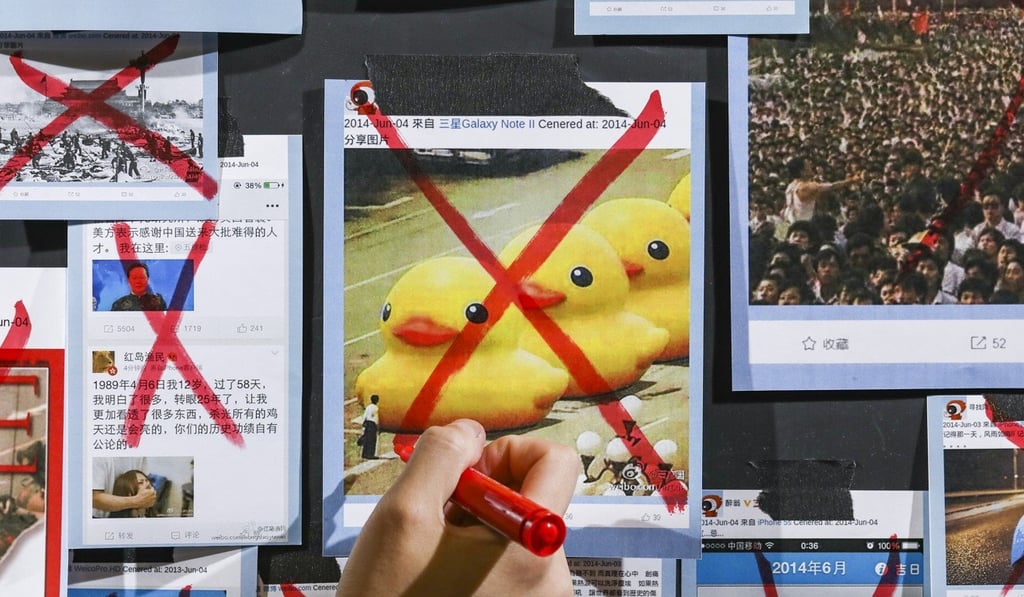The art of getting Tiananmen Square crackdown onto Chinese social media, from a rock star to a line of rubber ducks
- Dr Fu King-wa’s Weiboscope project is a collection of censored pictures that have appeared briefly on China’s ubiquitous social media platform
- Display highlights the cat-and-mouse game between increasingly creative Weibo users and ruthlessly efficient mainland Chinese censors

On a wall inside the century-old Elliot Hall at the University of Hong Kong hang hundreds of pictures, including photographs of Chinese rock singer Cui Jian, candles, a bouquet of flowers and a row of rubber ducks approaching a miniature figure of a man.
Each by itself seems innocuous. All have been crossed with red markers.
What they have in common is that all these pictures appeared briefly on the popular Chinese social media platform Weibo before disappearing.
Dr Fu King-wa, an associate professor at the university’s Journalism and Media Studies Centre, said they were censored by Chinese authorities who decided they were visual protests related to the June 4 1989 crackdown on pro-democracy protesters at Beijing’s Tiananmen Square.

He said mainland Chinese netizens, determined to remember the events of 1989 despite the authorities’ efforts to black out news and block discussion of the protests and bloody crackdown, have kept coming up with creative ways to bypass the censors with photographs that send a message.